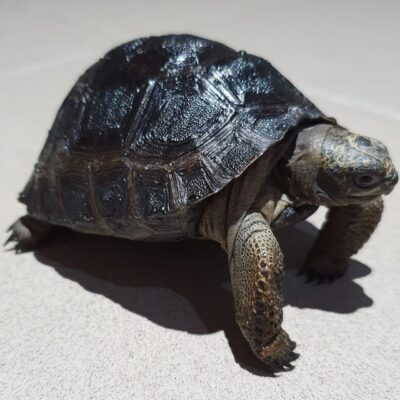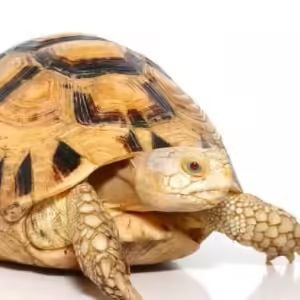Aldabra Tortoise For Sale
$8,000.00
Aldabra Tortoise range from darker gray or black with a high-domed carapace. They have a very long neck that aids in gathering food and long legs that are thick and long.
Males: Males have longer and thicker tails than females.
Size
Males: mature males are average in carapace (shell) length of 122 centimeters (4 feet.)
Female: The female carapace length is 91cm (3 3.).
Weight
Males: Men who weigh who weigh up 250 kg (550 lbs.) or more
Female: Mature females average 159 kg (350 lb.)
Diet
Although it is primarily dependent on vegetation, but it is also a vegetarian. Aldabra tortoise is able and opportunistic with its food. To ensure that it has sufficient nutrition to survive it is possible for the tortoise to augment its food with smaller invertebrates or some even carcasses (including the dead of tortoises).
Incubation
Incubation depends on temperature in warm temperatures eggs hatch in around 110 days. However, in cooler temperatures, eggs require 250 days to hatch.
Size of the Clutch: Typically, females lay between 4 to 14 eggs that are of which less than a quarter are fertile. In zoological environments the size of the clutch could grow, reaching 9-25 eggs.
Breeding Period
In healthy populations, which are not crowded A another generation (laying) during the breeding period is very likely.
Sexual maturity
Sexual maturation will be determined by your size, rather than age. Most species start reproducing when they’re about half total size, typically about 25 years old.
Life span
Unknown, but it is likely to live more than 100 years.
Range
The whole wildlife population that inhabits Aldabra Tortoise are restricted to Aldabra Atoll (a small group of coral islands within the nation of islands in Seychelles located to the north from Madagascar).
Habitat
There are a variety of habitats in the islands where tortoises are located, such as mangrove swamp, scrub and coastal dunes. The highest concentrations of tortoises are found on platins, or grasslands.
Description
Aldabra Tortoise For Sale, one of the largest tortoises in the world, is native to the Aldabra Atoll in the Seychelles. Renowned for their impressive size and longevity, these tortoises can weigh up to 550 pounds and live for more than 100 years. Their distinctive physical characteristics and unique ecological role make them a fascinating subject of study and conservation efforts.
Physical Characteristics
The Aldabra tortoise boasts a large, domed shell that provides protection from predators and environmental elements. Its sturdy legs are adapted for traversing the rough terrain of the Aldabra Atoll. The tortoise’s skin is thick and wrinkled, aiding in moisture retention and temperature regulation. Moreover, its strong beak is well-suited for a diet primarily composed of vegetation, including grasses, leaves, and woody plant stems.
Habitat and Behavior
In their natural habitat, Aldabra tortoises are often found in open grasslands and mangrove swamps. They are primarily herbivores, playing a crucial role in their ecosystem by helping to maintain vegetation balance. These tortoises are also known for their social behavior; they often congregate in groups, especially during the mating season. Despite their slow and deliberate movements, Aldabra tortoises are excellent swimmers, which helps them navigate their island environment.
Conservation Status
The Aldabra tortoise is currently classified as vulnerable by the International Union for Conservation of Nature (IUCN). Efforts to conserve these magnificent creatures include habitat protection, breeding programs, and legal measures to prevent poaching and habitat destruction. Zoos and wildlife reserves around the world are also actively involved in the conservation and study of Aldabra tortoises, ensuring that future generations can continue to marvel at these ancient reptiles.







